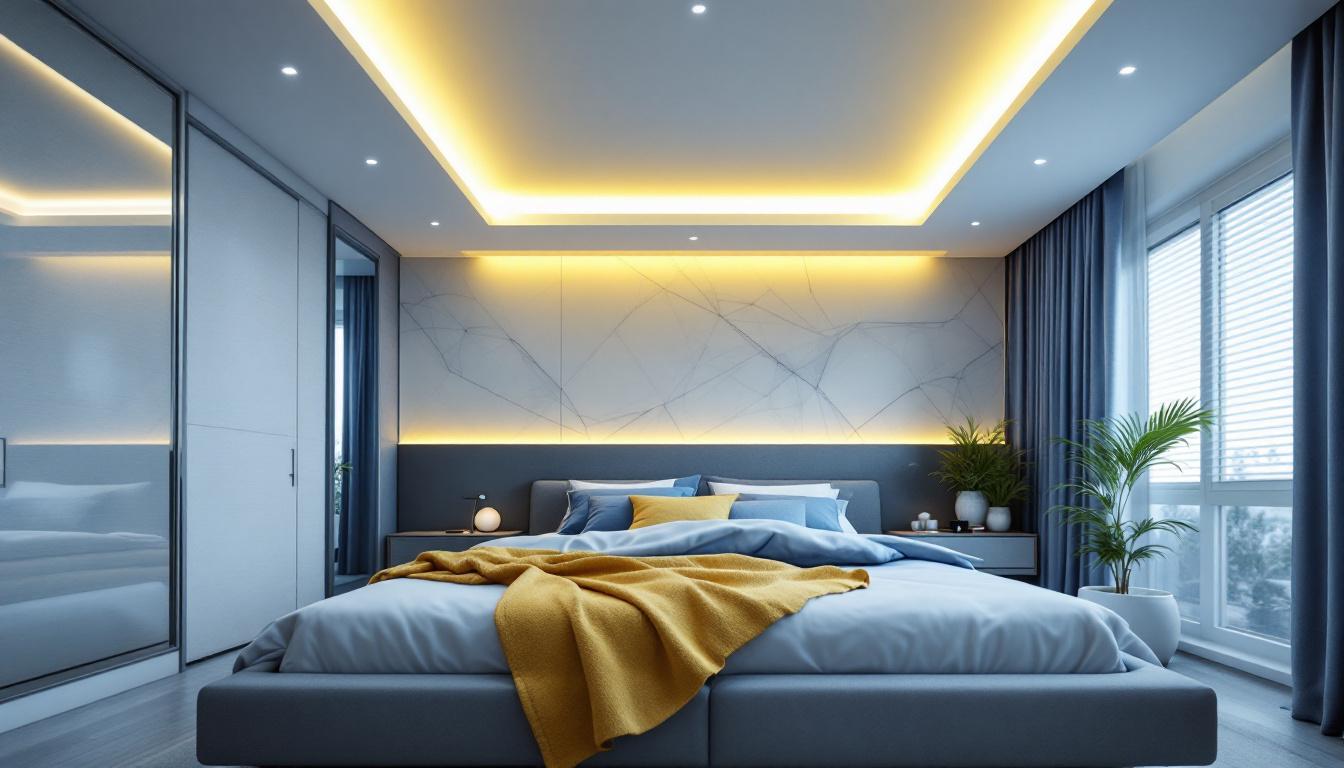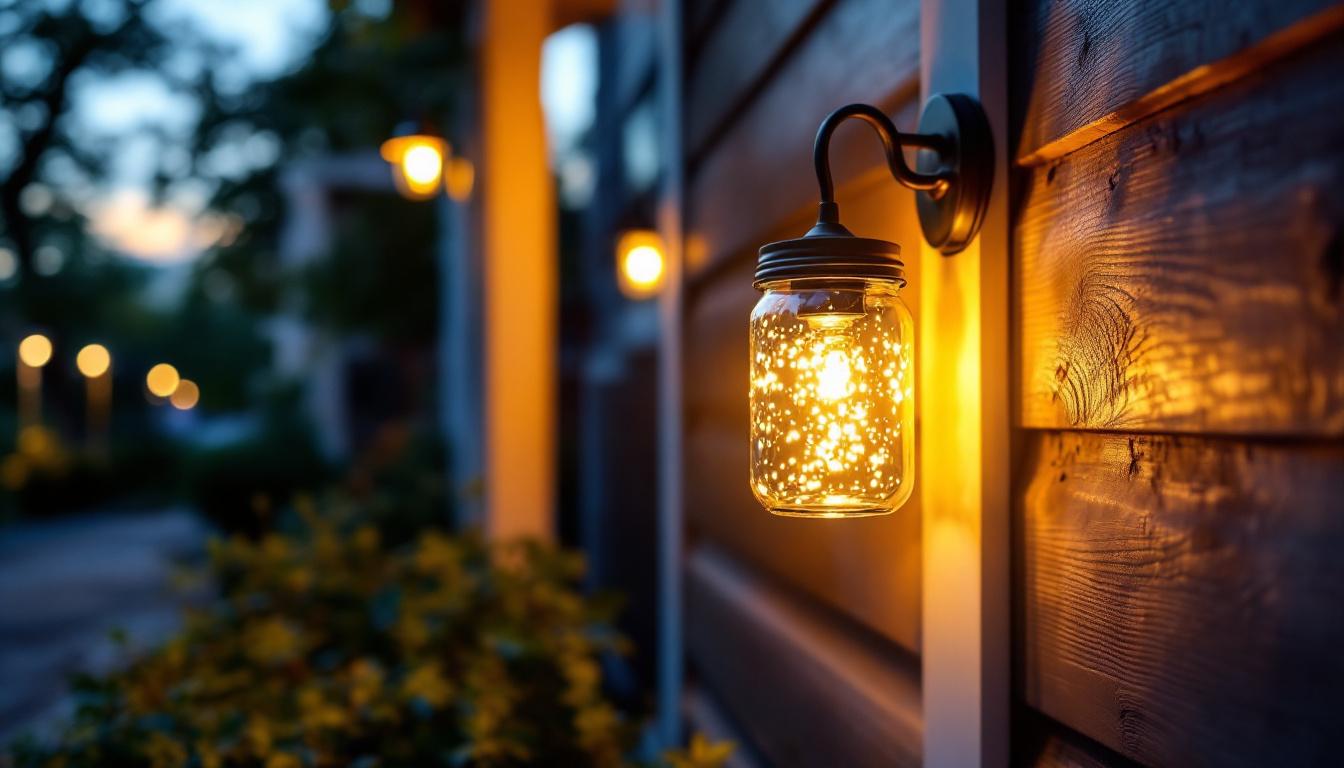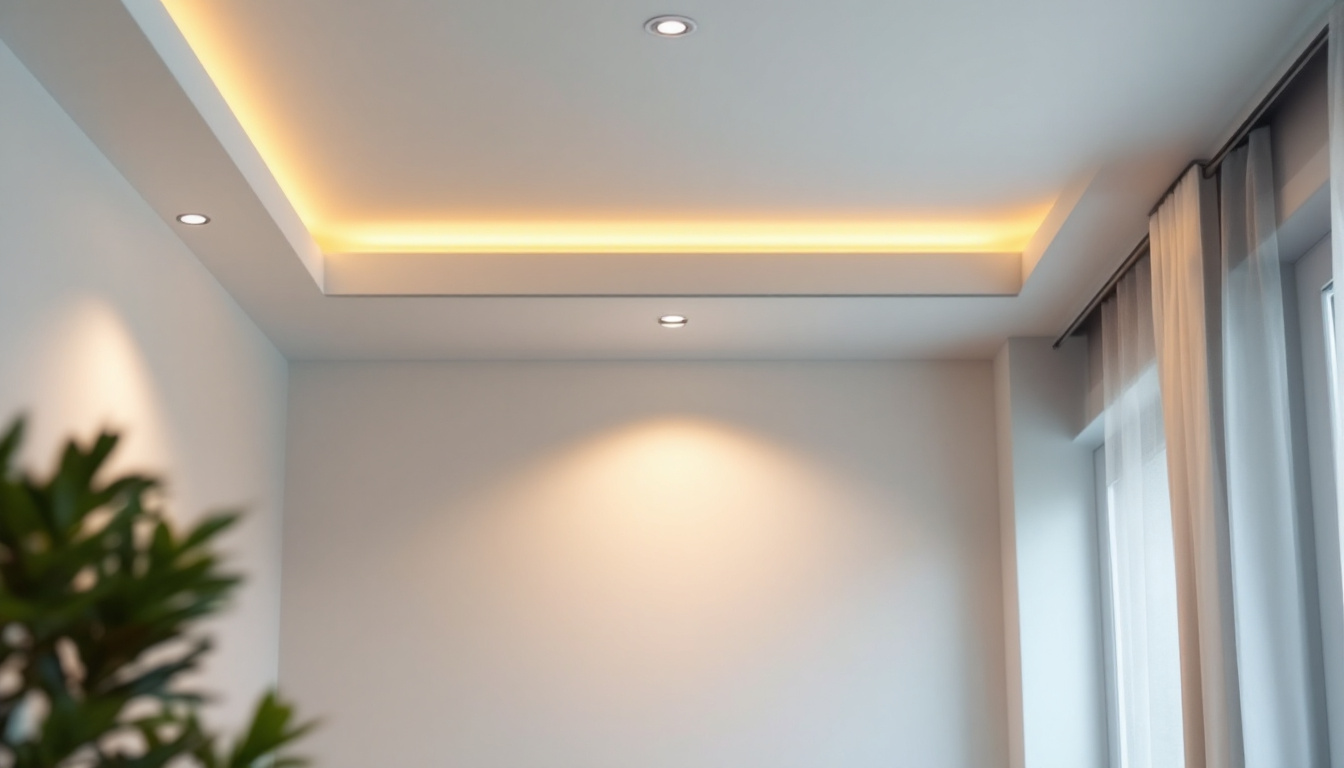
In the ever-evolving world of lighting technology, LED ceiling lights have emerged as a game changer for contractors and project managers alike. These fixtures not only provide superior illumination but also enhance overall project efficiency. Understanding the benefits and applications of LED ceiling lights can significantly impact the success of lighting projects.
LED ceiling lights offer a multitude of advantages that make them a preferred choice for lighting contractors. From energy efficiency to longevity, these lights stand out in various aspects.
One of the most compelling benefits of LED ceiling lights is their energy efficiency. Compared to traditional incandescent or fluorescent lights, LEDs consume significantly less power while providing the same or even greater levels of brightness. This reduction in energy consumption translates to lower electricity bills for clients and a reduced carbon footprint, aligning with sustainability goals.
Moreover, the efficiency of LED lights means that they produce less heat. This characteristic not only contributes to energy savings but also minimizes the load on HVAC systems, further enhancing overall energy efficiency in a building. In fact, studies have shown that switching to LED lighting can reduce energy usage by up to 80%, making it a smart choice for both residential and commercial applications. As more consumers become environmentally conscious, the demand for energy-efficient solutions like LED ceiling lights continues to grow, driving innovation in lighting technology.
Another significant advantage of LED ceiling lights is their impressive lifespan. While traditional bulbs may last for a few thousand hours, LEDs can operate for tens of thousands of hours, drastically reducing the frequency of replacements. This longevity is particularly beneficial in commercial settings where maintenance costs can be substantial. Businesses can save on labor and replacement costs, allowing them to allocate resources to other critical areas.
Additionally, LEDs are more durable than their traditional counterparts. They are constructed with solid-state technology, making them resistant to shocks, vibrations, and temperature fluctuations. This durability ensures that they can withstand the rigors of various environments, from residential homes to industrial facilities. Notably, LED ceiling lights are also less prone to breakage, which is a significant advantage in high-traffic areas or locations where safety is a concern, such as schools and hospitals.
LED ceiling lights are renowned for their superior quality of light. They provide consistent illumination without flickering, which can be a common issue with other types of lighting. The ability to choose from a wide range of color temperatures allows contractors to customize the lighting to suit the specific needs of each project, whether it be warm light for residential spaces or cooler light for office environments.
Furthermore, the high Color Rendering Index (CRI) of LED lights ensures that colors appear more vibrant and true to life. This quality is especially important in settings such as retail spaces, where accurate color representation can influence purchasing decisions. The versatility of LED lighting also extends to dimmability options, allowing users to adjust brightness levels to create the perfect ambiance for any occasion. Whether it’s a cozy dinner at home or a bright, focused workspace, LED ceiling lights can adapt to meet the demands of various activities, enhancing both functionality and aesthetic appeal in any environment.
Integrating LED ceiling lights into lighting projects requires careful planning and consideration. Understanding the specific needs of each project and how LED technology can meet those needs is crucial for contractors.
Before selecting LED ceiling lights, it is essential to assess the requirements of the project. Factors such as the size of the space, the purpose of the lighting, and the desired ambiance all play a role in determining the appropriate fixtures. For instance, a large commercial space may require high-lumen output fixtures to ensure adequate illumination, while a cozy residential area may benefit from softer, warmer lighting.
Additionally, understanding the layout of the space is vital. This includes considering the placement of furniture, architectural features, and existing electrical infrastructure. Proper planning can help avoid common pitfalls, such as inadequate lighting in certain areas or excessive glare from poorly positioned fixtures.
Once the project requirements have been assessed, the next step is to choose the right LED ceiling light fixtures. The market offers a vast array of options, including recessed lights, flush mounts, and pendant lights, each with its unique advantages.
Recessed lights, for example, are ideal for modern spaces where a clean, unobtrusive look is desired. Flush mount fixtures, on the other hand, provide a more traditional appearance and are suitable for lower ceilings. Pendant lights can add a decorative element while providing focused illumination over specific areas, such as dining tables or kitchen islands.
proper installation is critical to maximizing the benefits of LED ceiling lights. Contractors should ensure that the fixtures are installed according to the manufacturer’s guidelines and local building codes. This includes considerations for wiring, mounting, and ensuring adequate ventilation, especially in enclosed spaces.
Furthermore, utilizing smart lighting controls can enhance the efficiency of LED ceiling lights. Dimming options and motion sensors can help tailor the lighting to the specific needs of the space, further reducing energy consumption and enhancing user experience.
Beyond their technical advantages, LED ceiling lights can have a significant economic impact on lighting projects. The initial investment may be higher than traditional lighting options, but the long-term savings and benefits often outweigh these costs.
While the upfront cost of LED ceiling lights can be a consideration for clients, the long-term savings are undeniable. The reduced energy consumption leads to lower utility bills, and the extended lifespan of LED fixtures means fewer replacements and maintenance costs.
For commercial projects, these savings can be substantial. Businesses can allocate the funds saved on lighting to other areas, such as improving services or expanding operations. This financial flexibility can be a significant selling point for contractors when discussing project proposals with clients.
Incorporating LED ceiling lights can also enhance the overall value of a property. Energy-efficient features are increasingly sought after by buyers and renters, making properties with modern lighting solutions more attractive in the real estate market.
Moreover, the aesthetic appeal of well-lit spaces can create a positive impression, further increasing desirability. Whether in residential or commercial settings, effective lighting can transform a space, making it feel larger, more inviting, and functional.
The shift towards LED ceiling lights is not solely about efficiency and cost savings; it also plays a crucial role in environmental sustainability. As awareness of climate change and energy conservation grows, the demand for eco-friendly lighting solutions continues to rise.
LED lights are significantly more energy-efficient than traditional lighting options, which directly contributes to a reduction in greenhouse gas emissions. By consuming less power, LED ceiling lights help decrease the demand on power plants, which often rely on fossil fuels.
Furthermore, the longevity of LED lights means fewer resources are required for manufacturing, transporting, and disposing of lighting products. This reduction in waste is a critical factor in promoting a more sustainable approach to lighting design.
Many lighting contractors are increasingly involved in green building initiatives that prioritize sustainability. Incorporating LED ceiling lights into projects aligns with these goals and can contribute to certifications such as LEED (Leadership in Energy and Environmental Design).
By selecting energy-efficient lighting solutions, contractors can help clients achieve their sustainability objectives while also enhancing the overall performance of the building. This alignment with green initiatives can also be a strong marketing point for contractors looking to differentiate themselves in a competitive market.
The landscape of LED ceiling lighting is continually evolving, with new technologies and trends emerging that promise to enhance efficiency and performance even further.
One of the most significant trends in the lighting industry is the integration of smart technology. Smart LED ceiling lights can be controlled remotely, allowing users to adjust brightness, color temperature, and even create lighting schedules through mobile applications.
This level of control not only enhances user experience but also optimizes energy consumption. For contractors, offering smart lighting solutions can set them apart from competitors and appeal to tech-savvy clients looking for modern, efficient solutions.
As LED technology continues to advance, the design possibilities for ceiling lights are expanding. Innovative designs that incorporate LEDs into architectural elements or decorative fixtures are becoming increasingly popular. This trend allows contractors to offer clients unique solutions that enhance the aesthetic appeal of their spaces.
Moreover, advancements in LED technology are leading to improvements in light quality and efficiency, making it easier for contractors to meet the diverse needs of their clients while ensuring high performance.
LED ceiling lights represent a significant advancement in lighting technology, offering numerous benefits that can enhance project efficiency for contractors. From energy savings and longevity to improved quality of light, the advantages are clear.
By understanding how to effectively incorporate LED ceiling lights into projects, contractors can not only meet client expectations but also contribute to sustainability efforts and improve the economic viability of their projects. As the industry continues to evolve, staying informed about the latest trends and technologies will be essential for contractors looking to maintain a competitive edge.
In a world where energy efficiency and sustainability are becoming increasingly important, LED ceiling lights are not just a choice; they are a necessity for modern lighting projects. Embracing this technology can lead to more successful, efficient, and environmentally friendly outcomes for contractors and their clients alike.
Ready to elevate your lighting projects with the efficiency and sustainability of LED ceiling lights? At LumenWholesale, we provide contractors with the high-quality, spec-grade LED lighting solutions you need to outshine the competition. Say goodbye to inflated markups and hello to unbeatable wholesale prices, all while enjoying the convenience of free shipping on bulk orders. Don’t compromise on quality or value; choose LumenWholesale for lighting that meets the highest industry standards. Make your next project a beacon of efficiency and cost-effectiveness. Wholesale Lighting at the Best Value is just a click away.

Discover essential tips for lighting contractors to seamlessly integrate suspended ceilings in bedrooms.

Discover essential compliance tips for Jelly Jar Porch Light installation.

Discover the top recessed can lights with expert insights from leading lighting contractors.

Discover essential tips for lighting contractors to effectively install solar pole lights outdoors without encountering common pitfalls.